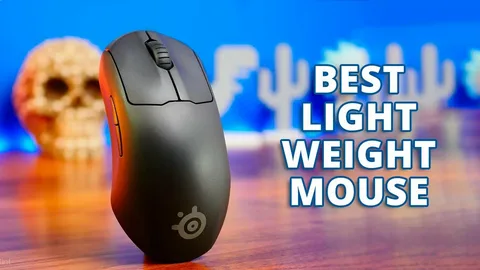In the world of computing and gaming, finding the perfect mouse can be a game-changer. The ideal mouse combines comfort, precision, and speed to enhance productivity and gameplay. When ergonomics meets speed, the search often leads to one clear solution: a lightweight mouse that doesn’t sacrifice comfort for agility. In this article, we will explore how to find the best lightweight mouse where ergonomics meets speed to elevate your experience.
Why Ergonomics Matters in a Lightweight Mouse
Ergonomics focuses on designing devices that fit the natural movements and posture of the user. A well-designed mouse reduces strain on your hand and wrist, helping prevent repetitive stress injuries such as carpal tunnel syndrome. However, many lightweight mice prioritize speed and agility but neglect ergonomic comfort, leading to discomfort during extended use.
The key to finding the best lightweight mouse lies in balancing ergonomics with performance. When ergonomics meets speed, users experience fluid, fast movements without sacrificing comfort, even during long sessions at the desk or intense gaming marathons.
The Importance of Speed in a Lightweight Mouse
Speed is critical, especially for gamers and professionals who rely on quick, precise movements. A lightweight mouse allows for faster swipes and quicker response times, giving users a competitive edge. However, a mouse that is too light or poorly designed can feel flimsy or difficult to control.
Manufacturers now focus on combining lightweight materials with ergonomic shapes to ensure users get both speed and control. When ergonomics meets speed, it means the mouse is not only fast but also easy to grip and maneuver, improving overall efficiency.
Features to Look for When Choosing the Best Lightweight Mouse
To find the best lightweight mouse where ergonomics meets speed, consider the following features:
1. Weight and Build Quality
Look for mice weighing under 80 grams with durable materials such as honeycomb shells or lightweight plastics that ensure sturdiness without added bulk.
2. Shape and Grip Style
Whether you use a palm, claw, or fingertip grip, the mouse’s shape should complement your natural hand posture to minimize fatigue.
3. Sensor Performance
High DPI and polling rates are essential for precise tracking and fast response times, particularly for gamers.
4. Customization Options
Adjustable weights, programmable buttons, and customizable DPI settings allow users to tailor the mouse for both comfort and speed.
5. Battery Life and Connectivity
For wireless options, look for long-lasting battery life and low-latency connections to maintain performance without interruptions.
Conclusion: Balancing Comfort and Agility
When ergonomics meets speed: finding the best lightweight mouse, the result is a device that enhances both comfort and performance. Whether you’re a professional working long hours or a gamer chasing quick reflexes, choosing a mouse that prioritizes both elements ensures you stay productive and comfortable.
By focusing on ergonomics and speed, you’ll enjoy smoother, faster movements without the strain that can come from poorly designed peripherals. So next time you’re in the market for a new mouse, remember that the best lightweight mouse is the one where ergonomics meets speed in perfect harmony.

